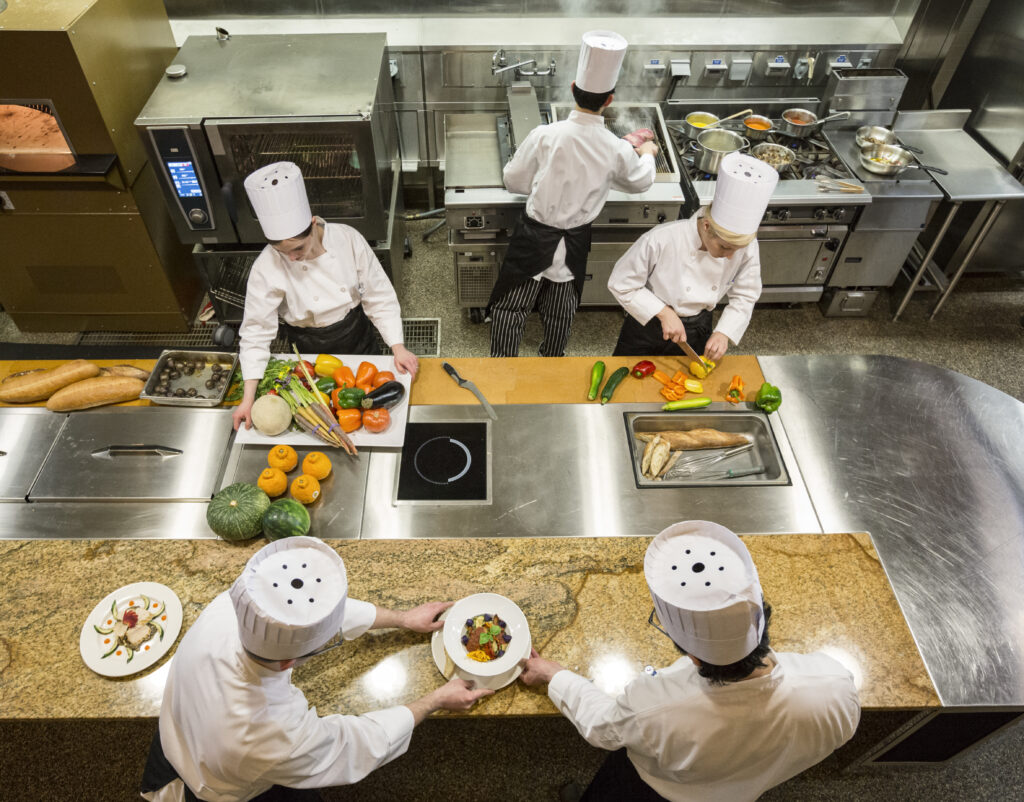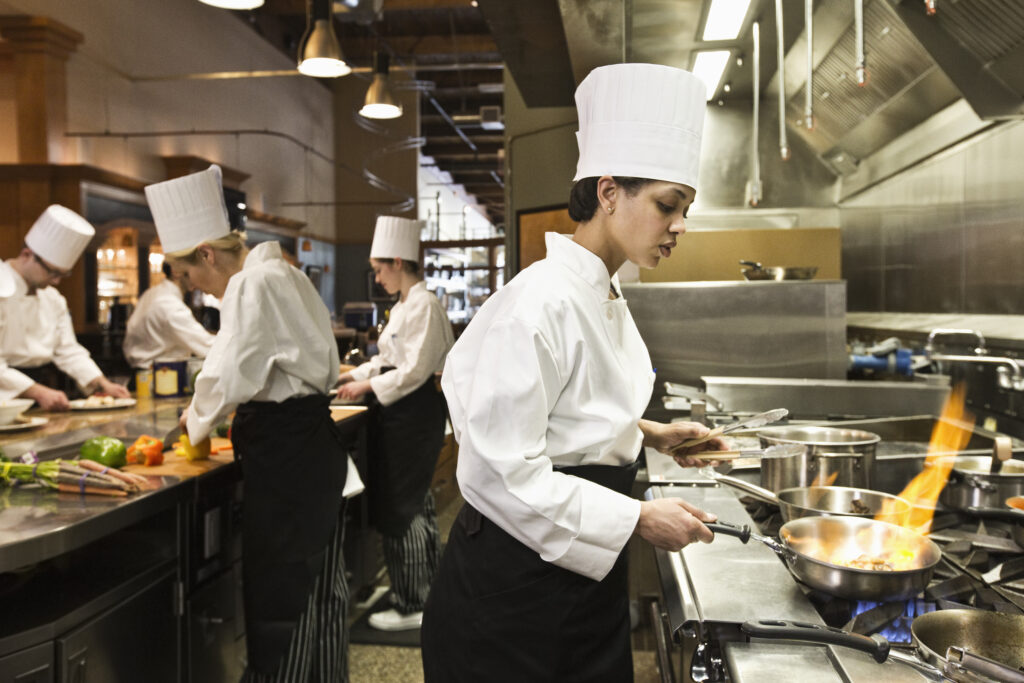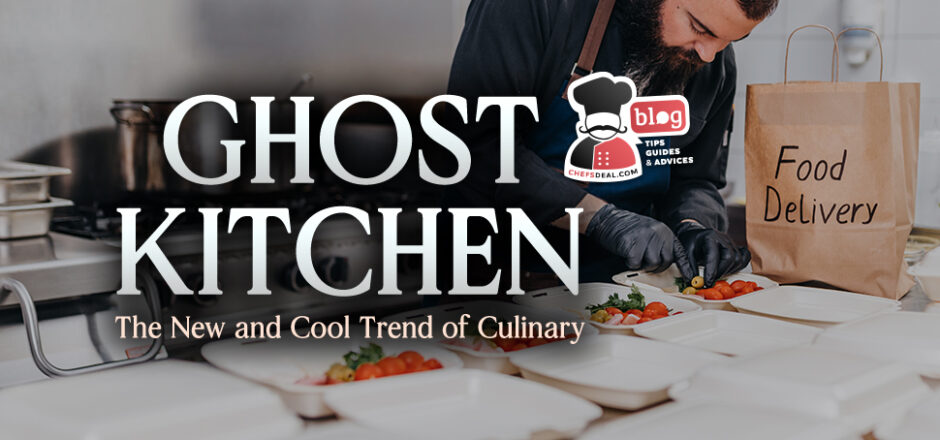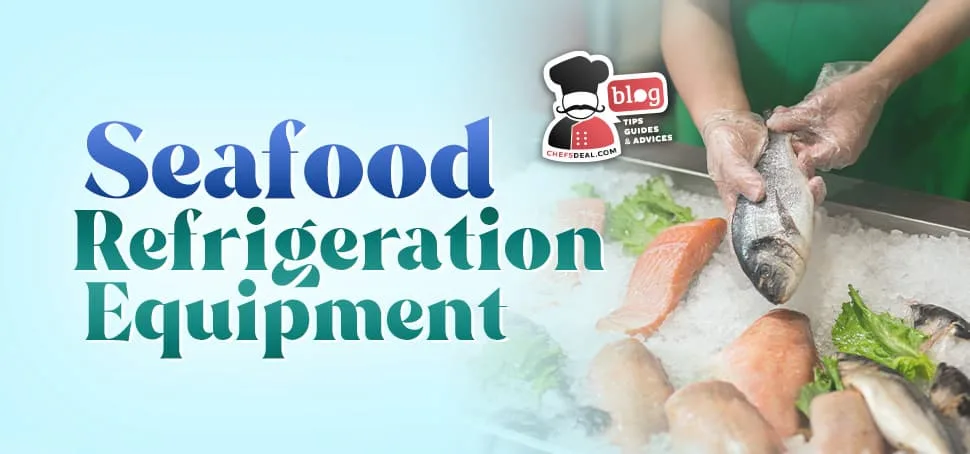Ghost kitchens, also known as virtual or micro cloud kitchens, are restaurants with no sitting area or dine-in service. Instead, ghost kitchens serve food by online delivery. A ghost kitchen food service business consists of a kitchen full of all commercial kitchen equipment for food preparation and cooking, but there is no server staff, no sitting room, or no customers inside.
In a ghost kitchen, the chefs cook food, and the cooked food is served by the food delivery apps. Therefore, in recent years, they have started to take the place of traditional dine-in restaurants because more people prefer online delivery, including the pandemic effect; we can say that they are the future of food service operations.
The Difference Between a Ghost Kitchen and a Virtual Restaurant
Ghost kitchens are sometimes confused with virtual kitchens, which have some differences. A virtual brand is a brand that only sells food through delivery apps, and a ghost kitchen serves the virtual brands. Virtual kitchen companies provide kitchen space equipped fully with commercial cooking equipment and tools for rent.
On the contrary, virtual restaurants use brick-and-mortar places instead of renting and delivering the food cooked in their own kitchen. Most virtual kitchens belong to one specific brand, while multiple brands can use ghost kitchens.

Why Use A Ghost Kitchen?
Some restaurants and brands prefer using one ghost kitchen jointly. The food is prepared and cooked in the same physical kitchen but served under different brands and menus. This is one of the reasons why a ghost kitchen is so profitable and preferred by many operators.
Ghost kitchens were mostly used by virtual brands before. After the global pandemic, restaurant operators were driven to reduce expenses or close their restaurants, adopting the virtual kitchen concept.
Before the pandemic, ghost kitchens were a cost-effective alternative for small establishments, too, since building a complete restaurant with a dining room could be challenging. Large companies are also using virtual kitchens to test new menu items under different brands in case the ideas fail.
Pros And Cons Of A Ghost Kitchen
Ghost kitchens are a trendy food business model and have many pros and cons as regular restaurant kitchens.
The Advantages of a Ghost Kitchen
- There is less risk than in standard restaurants since the startup costs are lower.
- Working in a virtual kitchen minimizes food waste and inventory expenses.
- The menu can be easily changed at any time based on the demand.
- Virtual kitchens can employ a few chefs, and there is no need for service personnel.
Since the importance is on delivery and food, most ghost kitchen operators prefer to rent kitchens in locations with lower rent prices. The operators will undoubtedly make money if the delivery is accessible and demanding.
Disadvantages of a Ghost Kitchen
- Third-party delivery platforms have high commission fees of between %15-30 on each order. If you want to avoid this, you may either provide pick-up orders or develop an in-house system for delivery and ordering online.
- They require a high number of orders to be lucrative. In rural areas, a ghost kitchen may not be viable in rural places due to the absence of a consumer base.
- They do not have customer interaction. The operators can not see the customer experiences and opinions, so they can not completely innovate, considering customer feedback.
- You can not boost your sales with alcohol. The majority of newly opened virtual kitchens lack liquor permits, and even if they have, most cities prohibit alcohol delivery.
Main Types of Ghost Kitchens
Ghost kitchens have several types, like regular restaurants and other food service establishments. The different operations practicing the concept bring different and unique forms giving rise to innovations. Here are the main types of ghost kitchen concepts.
1. Cloud kitchens
Cloud kitchens, or commissary kitchens, are virtual kitchens that several brands share. An entrepreneur mostly rents a space, fills it with all needed kitchen equipment, and then rents it to restaurants. Cloud kitchens are the most economical virtual kitchens since there are no startup costs, and since multiple brands share them, the rent is lower. They are mostly located in densely populated regions with delivery demand. The owners of the shared ghost kitchens generally ensure the kitchen complies with state codes and regulations, which removes the most difficult part of owning a business.
2. Incubator Kitchens
Incubators or pop-up kitchens are ghost kitchens connected to existing restaurants but only serve for delivery. Incubator kitchens are ideal for operators that want to experience the concept or serve online orders. Incubator kitchens facilitate the staff’s work by separating the delivery and dine-in service processes. Most operators prefer incubator kitchens because of their simplicity of adding an extra cash flow to an existing operation.
3. Kitchen Pods
Kitchen pods, or dark kitchens, are freight containers outfitted with kitchen tools and supplies, including all cooking and prepping equipment, electrical connections, and plumbing. They are movable, letting you place them anywhere you can reach more customers. But because of the limited space, it could be hard for you to maintain safety precautions, and they don’t have any windows; that’s why they are called dark kitchens.
Operational Needs For A Ghost Kitchen
- Like all food service establishments, a ghost kitchen requires kitchen equipment. Choosing safe and simple commercial kitchen equipment with every operational skill level will provide maximum efficiency and facility to staff.
- One of the best parts of operating a virtual kitchen is to change the menu or food items whenever you want, depending on customer demands, or to try new recipes. If you purchase multifunctional equipment, you will have the required flexibility to cook whatever you want and do it using a few pieces of equipment.

- Since ghost kitchens will have limited space compared to standard commercial kitchens, using them efficiently is the key point for a smooth operation. Choosing the basic equipment that will manage multiple tasks will prevent the space lost for unneeded equipment that you will not use continuously.
- Like all other food service operations, a ghost kitchen must ensure food safety and codes. There are various commercial kitchen code requirements, and complying with them is required to start and maintain a virtual kitchen operation. Before starting the business, you should check the necessary ghost kitchen food codes, as you require to follow the same regulations as any restaurant.
Practical Tips to Start a Ghost Kitchen
- First, start with your commercial kitchen equipment. Making a list of the restaurant equipment you have and the ones you need will simplify your work and assist in determining if you can start with what you have.
- After setting up your kitchen, you can determine the kind of cuisine you want to serve and your menu. Defining your intended audience will help you decide on your menu. You can create a menu depending on the likes of people in your region or the currently popular foods. Or you can serve the same food as your existing restaurant. Next, you can create a brand for your virtual restaurant.
- The aim of them is delivery, so confirm that you have all the technological, electrical, and plumbing supplies for a seamless operation.

Equipping Ghost Kitchens
Like all food service operations, a ghost kitchen needs all basic commercial kitchen equipment. The kitchen you rent from companies should include the essential commercial storing, prepping, and cooking equipment, or you will set up your kitchen if you operate in a pop-up or a dark kitchen. If you rent an equipped kitchen, there is mostly the necessary equipment, including full-size ovens, commercial ranges, walk-ins, etc. You can either require the little basic supplies and tools from the company owner or get them yourself.
To Sum Up
From storage and preparation tools and supplies to commercial cooking and refrigeration equipment, a virtual kitchen requires various commercial kitchen equipment that is versatile and can meet a variety of purposes. An all-fitted ghost kitchen will ensure to handle every order, and an optimized kitchen will bring profit and reputation in its wake.






